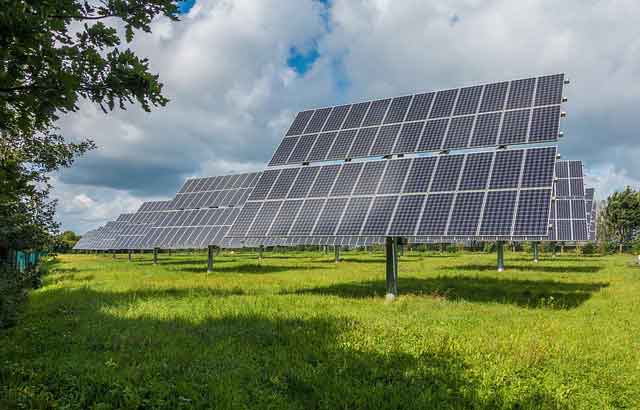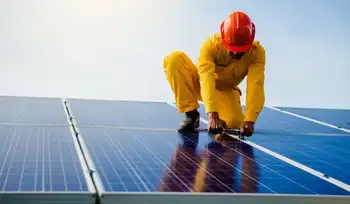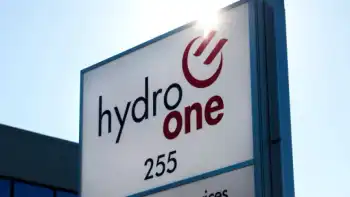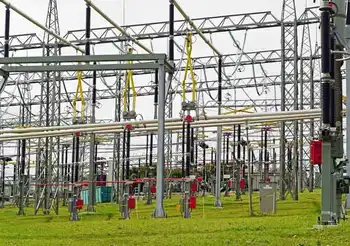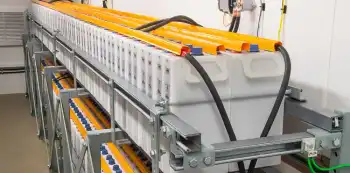Cross-border project would capture, store CO2
By Associated Press
Protective Relay Training - Basic
Our customized live online or in‑person group training can be delivered to your staff at your location.

- Live Online
- 12 hours Instructor-led
- Group Training Available
Montana Gov. Brian Schweitzer says the project would capture a daily 1,000 tons of carbon dioxide produced by a Canadian coal plant, then send it through pipelines to a Montana site where it would be injected underground for storage.
Carbon dioxide — a byproduct of burning fossil fuels — is a major driver of climate change. Researchers and policymakers around the globe are scrambling for ways to capture the gas before it escapes into the atmosphere.
The Saskatchewan-Montana Project would target one of the world's largest sources of the greenhouse gas: coal-fueled power plants.
Officials involved in the proposal aim to start storing carbon dioxide within two years. They say that could jump-start climate change efforts now bogged down by political uncertainty and technological challenges, by providing a working demonstration of how carbon capture works.
"Carbon dioxide is a concern that's global," Schweitzer said. "What could be better than having two of the largest carbon dioxide-producing countries in the world working together on this?"
The carbon would be captured by retrofitting equipment onto an existing 300-megawatt power plant owned by Canada's SaskPower. The gas then would be piped 50-60 miles south into northern Montana, where the gas would be injected deep underground for storage.
The carbon dioxide could later be withdrawn for use in oil production, a long-standing industry practice in which carbon dioxide is pumped into the ground to push oil out of aging reserves.
Other carbon capture proposals involving new types of coal power plants are in the works in Montana, Wyoming, Ohio, Illinois and elsewhere. Most involve a process known as gasification, where coal is turned into a gas before it's used to generate electricity. That process makes it far simpler to capture carbon dioxide, because the greenhouse gas is separated from other gasses early in the process.
Yet most of those plants remain years from completion as developers work out kinks in new technologies. The most prominent example, the government-sponsored FutureGen project in Illinois, is bogged down under a soaring price tag and political squabbling.
Even if that proposal goes forward, building new, cleaner plants does not resolve the dilemma posed by the nation's 600 working coal-fired power plants. Those produce a cumulative 2 billion tons of carbon dioxide annually.
"You may in a practical way need to look at a transitional strategy, where you first retrofit (existing plants) and then rebuild the site at a later date with a gasifier," said Richard Doctor, a chemical engineer and carbon-capture specialist at the Argonne National Laboratory outside of Chicago.
Doctor said a major hurdle to such a strategy is its huge cost. Power plants retrofitted to capture carbon dioxide must devote one-third of the electricity they produce to the process — a significant expense that could drive up rates for electricity customers.
Schweitzer said he has discussed the Saskatchewan-Montana project with White House "Climate Czar" Carol Browner, and will seek $100 million from the stimulus package working through Congress to fund Montana's share.
A Saskatchewan government official, Crown Investments Corporation Vice President Iain Harry, said the province also hopes to pay for the project with help from its national government.
"The first step is to get all four governments to agree this is a project they want to pursue," Harry said. He said a signed agreement could be reached within the next two to three weeks.
Montana's Poplar Dome geological formation, east of Medicine Lake, appears to offer the best site for storing carbon dioxide from the SaskPower plant, said Montana State Geologist Edmond Deal.
Deal described the formation as a series of inverted bowls made up of different types of rock. Carbon dioxide pumped deep into the formation would be trapped between the layers, where there is enough room to hold 20 years worth of gas from the SaskPower plant.
Deal said the material is just as likely to stay underground as natural gas and oil deposits that have been there for millions of years.
"If it held oil or gas, we would have to reasonably think that it would also trap and hold carbon dioxide," he said.





